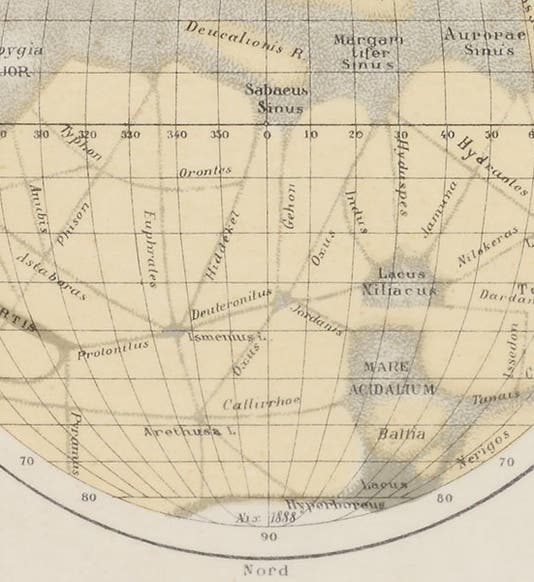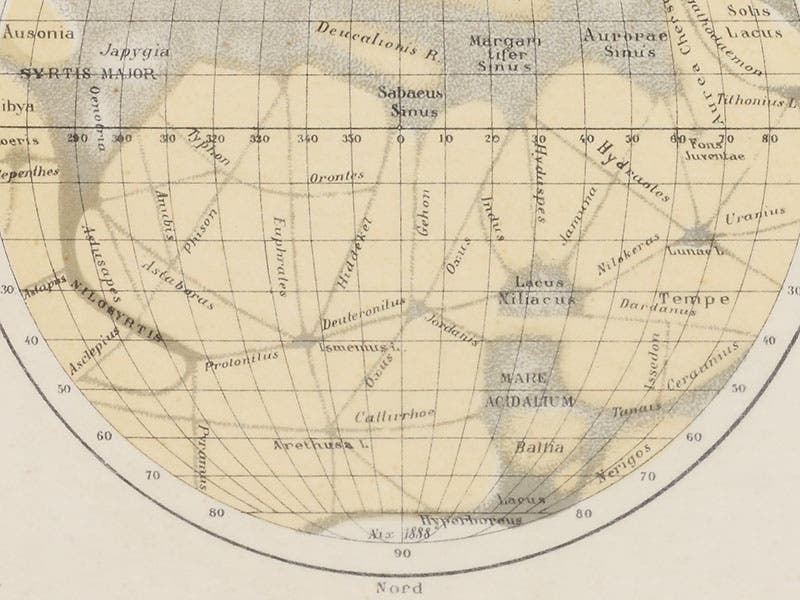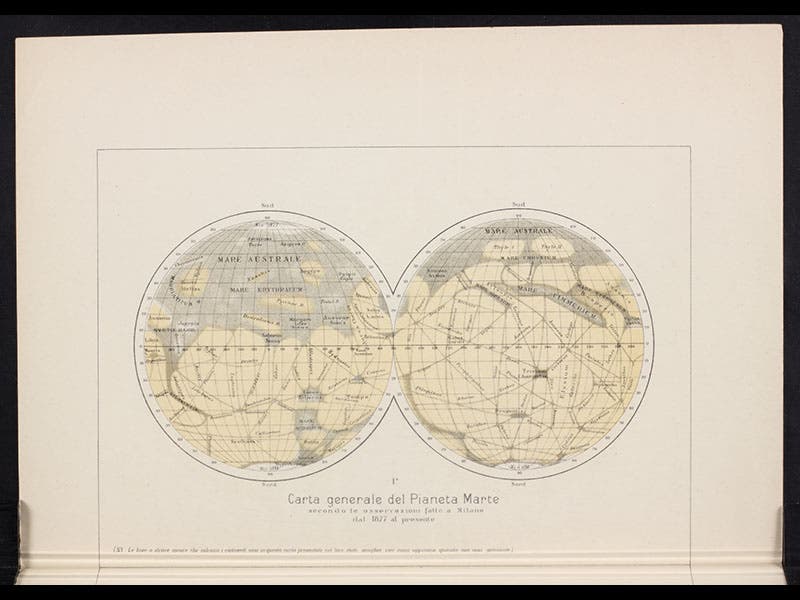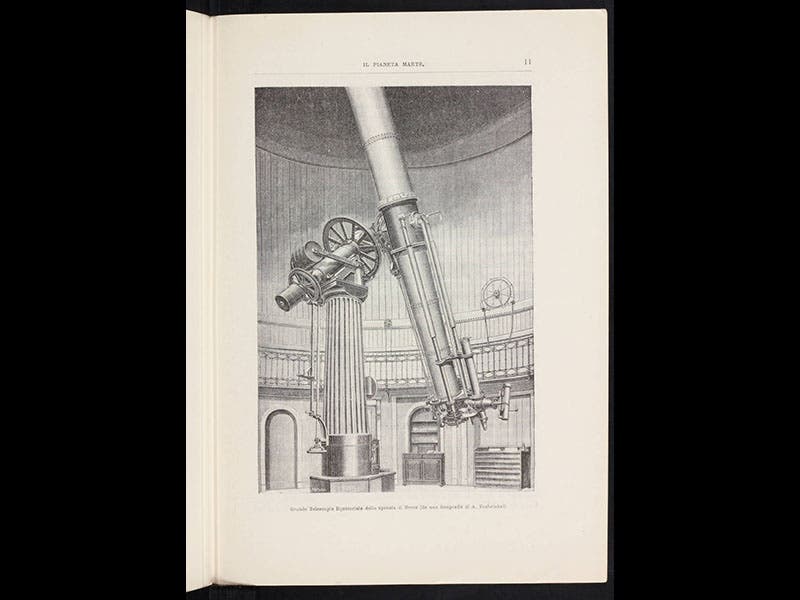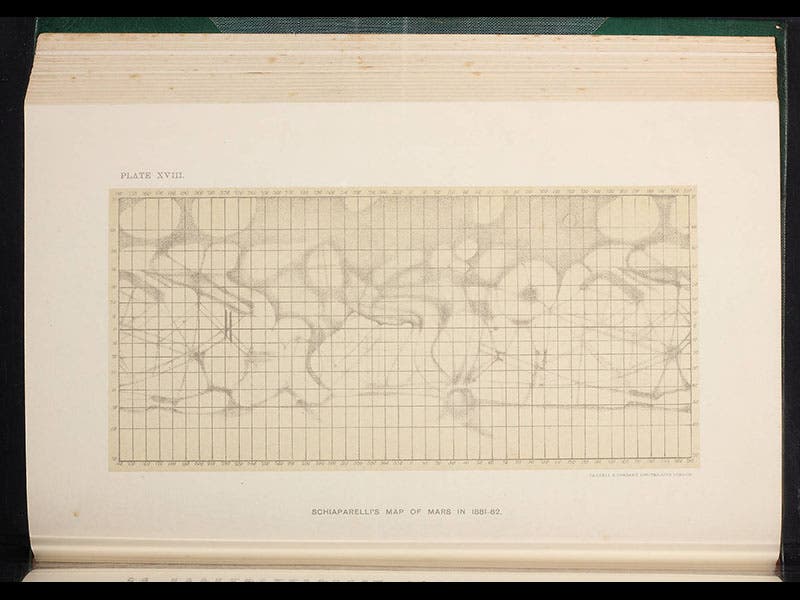Scientist of the Day - Giovanni Schiaparelli
Giovanni Schiaparelli, an Italian astronomer, was born Mar. 14, 1835. In 1877, Mars passed very close to the Earth, in what we call an opposition, and Schiaparelli, working in Bologna, used the opportunity to study the Martian features in detail. He published the results of his observations in a map that is remarkable for two reasons. First, he proposed a new system of Martian nomenclature, using names from ancient geography, so that the most prominent Martian feature, formerly called the Kaiser Sea, became “Syrtis Major,” and the second most prominent, previously the Terby Sea, was now “Solis Lacus,” the Lake of the Sun. Schiaparelli’s system was adopted and is the basis for the names we still use for the “areography” of the red planet.
Second, Schiaparelli’s map exhibited a system of straight lines, or “canali”, that criss-cross the lighter regions of the Martian surface. Schiaparelli was the first to see these channels, and he suspected that they had a natural origin, caused by the ebb and flow of water from the south polar cap. Later observers, such as Camille Flammarion in France and Percival Lowell in the United States, would see these “canali” as artificial constructions, evidence for the former existence of life on Mars.
Schiaparelli’s map appeared in several journals that we have in the serials collection of the Library, but the finest version we have is a separate offprint, published in 1893, which was a presentation copy from Schiaparelli to the great German physicist, Ernst Mach. The article also contains a view of the large telescope that Schiaparelli used to make his map. Our last image is a rectangular map of Mars, based on Schiaparelli, as it appeared in The Story of the Heavens (1901), by Sir Robert Stawell Ball.
A crater was later named after Schiaparelli. Those who saw the recent film, The Martian (2016), will recall Schiaparelli crater as the destination for Matt Damon’s astronaut character, Mark Whatney, as he tries to avoid being permanently marooned on Mars.
Dr. William B. Ashworth, Jr., Consultant for the History of Science, Linda Hall Library and Associate Professor, Department of History, University of Missouri-Kansas City. Comments or corrections are welcome; please direct to ashworthw@umkc.edu.

